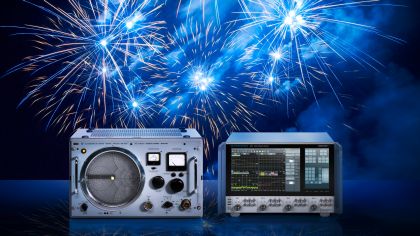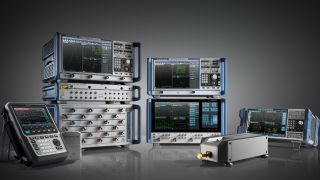Crafted for impact - when history meets tomorrow
In the 1950s, Rohde & Schwarz developed the first vector receiver capable of displaying S-parameters directly on a polar or Smith chart. This was a pioneering device that formed the basis for frequency-swept vector network analyzers (VNA).
The VNA is like a Swiss Army knife in the test and measurement world, and its versatility contributed to increased efficiency in electronic component R&D. This set the groundwork for many technological advancements in the latter twentieth century. For example, the VNA was key to developing the first generation of computers, which were primarily based on electron tube technology. By providing accurate measurements of electronic components, VNAs facilitated the design and optimization of complex circuits, leading to more reliable and efficient computing systems. The advancements made during this period laid the foundation for the digital revolution that followed.

















